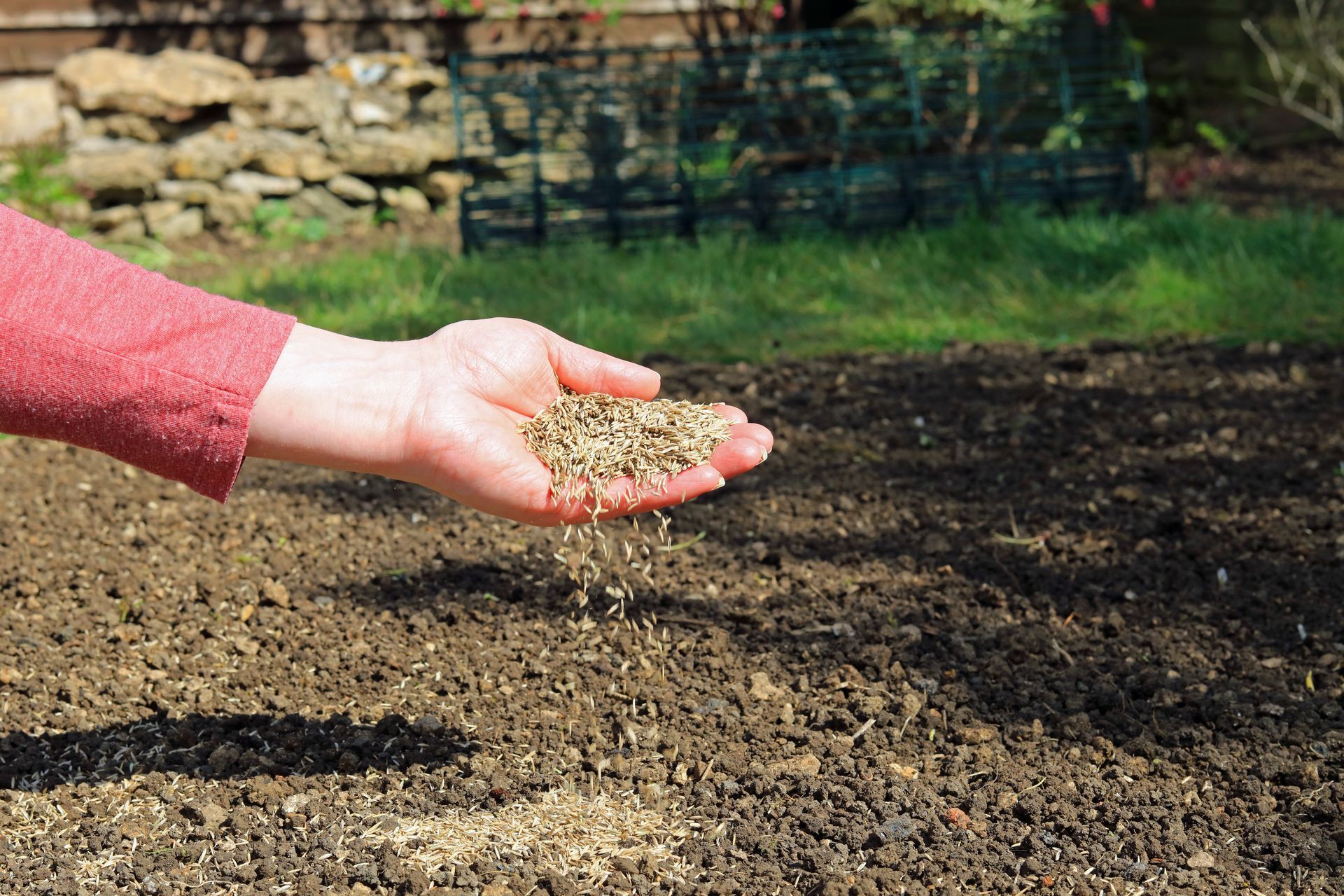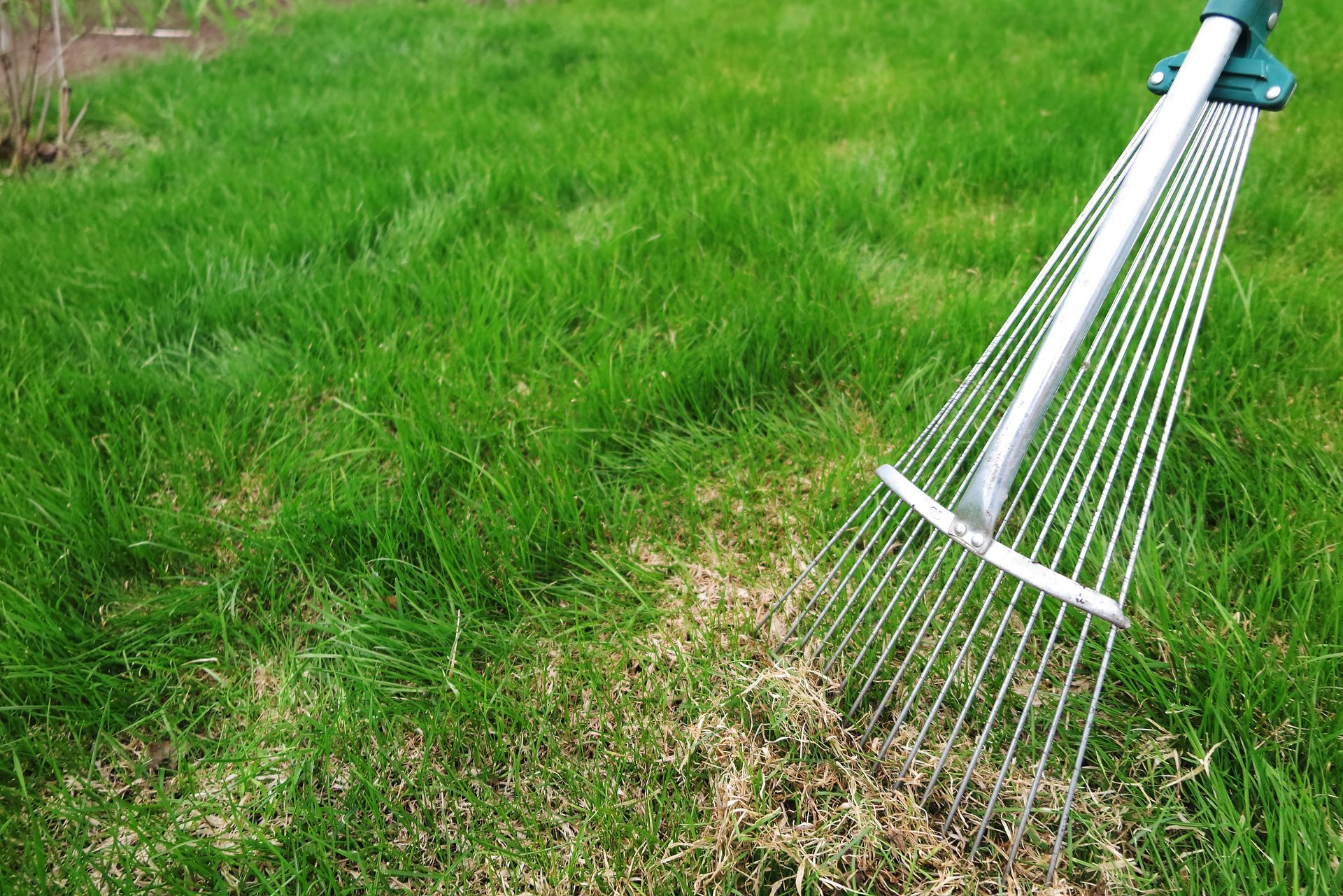November 22, 2022
How Pre-Winter Fertilizer Keeps MI Grass Greener

Colder months are quickly approaching, which means it’s the perfect time to prepare your lawn for winter. One way Michigan homeowners can protect their yard is by investing in pre-winter fertilizer. By nourishing your lawn before the ground freezes, you’re helping it build stronger roots and retain essential nutrients.
This keeps your lawn healthy throughout the winter months, leaving you with a greener lawn that’s ready to thrive in spring. Let’s break down how this process works so your lawn is prepared for the harsh weather ahead.
First Steps for Winter Lawn Care
Protecting your yard from winter involves more than battling the elements. Heavy snow, road salt and debris can negatively impact grass health. Moreover, these factors can limit growth in the Spring. To prevent this from happening, here’s a few steps you can take before applying fertilizer: Some steps need to be taken before you can apply this much-needed nutrition:
- Clear away debris – Remove debris like leaves, sticks and mulch can trap moisture or become compacted under snow. This helps prevent mold and disease from developing over winter.
- Aerate your lawn – Aeration loosens compacted soil, improves nutrient absorption and prevents thatch buildup. With aeration, you’re less likely to experience spongy grass or water pooling during winter.
- Cut your grass shorter – Make sure your grass height is roughly 2.5 to 3 inches before the first snowfall. Long grass may trap moisture and attract mold.
- Use topdressing – Topdressing helps to break down thatch, which can prevent nutrients from reaching your lawn in winter.
Now It’s Time To Apply Winterizer
If you’ve endured a Michigan winter, you may be familiar with winterizer. It’s a term to describe the specific type of fertilizer applied during the winter. Unlike most fertilizers, winterizer isn’t designed to help the grass grow through the snowy months. Instead, it helps your turf store water and food and can help protect against
snow mold.
How To Choose the Right Winterizer
Applying the right winterizer is crucial to your lawn’s health. If you’re applying winterizer yourself, it’s best to look for the
two main ingredients of winter fertilizer: nitrogen and potassium. While Nitrogen ensures your lawn has enough food, potassium helps strengthen the grass from winter stress and mold. However, it’s important to have the right amount of nutrients that address your lawn’s specific needs.
To get the correct nutrient levels, here’s a couple of things you can do:
- Conduct a soil test – Testing your soil beforehand can help you determine your lawn’s potassium and nitrogen levels.
- Check the ingredients list – Make sure the fertilizer doesn’t have excess phosphorus, since too much can kill your lawn.
- Less is more – You may want to use less than the suggested amount to avoid having unabsorbed nitrogen contaminate the groundwater.
Synthetic vs. Organic Winterizer
Winter fertilizer comes in both organic and synthetic forms. Let’s identify the benefits and drawbacks:
| Synthetic Winterizer Pros | Synthetic Winterizer Cons |
|---|---|
| It’s fast-acting | May have to apply more frequently |
| Guarantees specific ratio of nutrients | Potential contamination from chemicals |
| Less expensive | Can zap nutrients from the soil |
| Organic Winterizer Pros | Organic Winterizer Cons |
|---|---|
| Sustainable and biodegradable | Nutrient ratios aren’t guaranteed |
| Safe for people and pets | Slow-release nutrients |
| Prevents over-fertilization | More expensive |
Get the Best Results With Professional Application
Lawn care technicians have the experience, equipment and expertise to apply the right amount of winterizer evenly across your yard. They also use professional-grade products that penetrate deeper into the soil and deliver better results than most store-bought options.
Attempting to apply winterizer on your own can be time-consuming, physically demanding and may lead to uneven coverage or wasted product. Professional application ensures your lawn gets the proper nutrients it needs to stay healthy through winter and come back lush and green in spring.
Protect Your Lawn With Visionary Fertilization
Want to give your lawn the protection it needs this winter? Visionary Fertilization is here to help. Based in Shelby Township, we proudly serve homeowners throughout Macomb County and beyond.
Our experienced technicians provide pre-winter fertilization and seasonal lawn treatments designed to keep your grass healthy and vibrant year-round. Call us today at 586-315-4731 for a free estimate, or visit our website to learn more about our full range of services, including lawn care and outdoor pest control.




